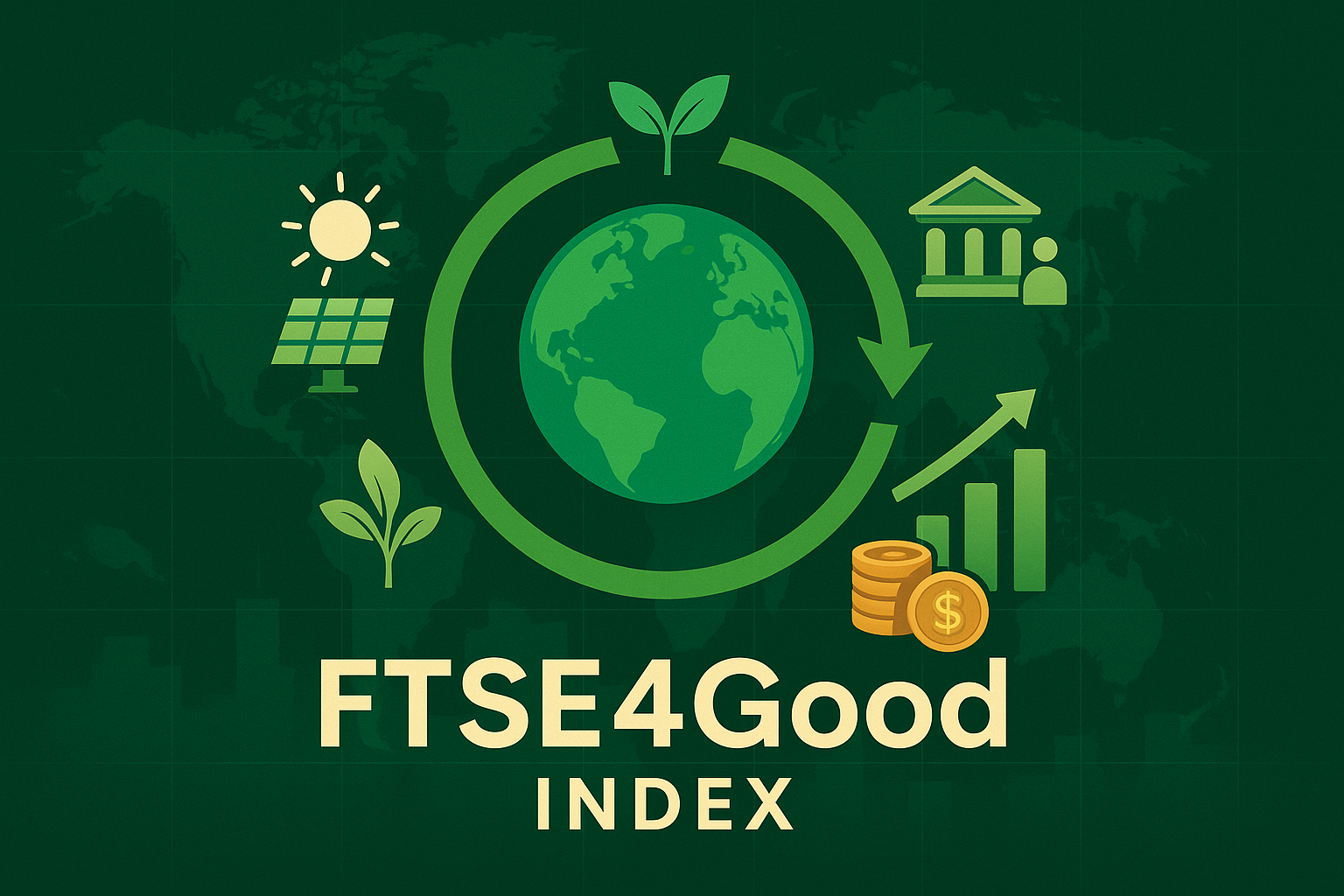Responsible‑investment benchmark consisting of companies that meet robust environmental, social, and governance (ESG) standards, thereby allowing investors to integrate sustainability principles without sacrificing broad‑market exposure.

1. Purpose and Scope
To begin with, FTSE Russell launched the FTSE4Good series in 2001 so that asset owners could, first, screen out controversial activities and, second, tilt capital toward higher‑standard issuers. The flagship FTSE4Good Developed Index currently holds about 1 ,600 large‑ and mid‑cap stocks spanning North America, Europe, and Asia‑Pacific. Meanwhile, regional and emerging‑market versions extend the framework worldwide.
2. Inclusion Criteria—Step by Step
| Pillar | Threshold Examples |
|---|---|
| Environmental | Verified carbon‑emission disclosure, climate‑risk governance, no severe water‑pollution breaches |
| Social | ILO labour‑rights adherence, diversity policies, responsible marketing |
| Governance | ≥ 50 % independent directors, transparent executive pay, anti‑corruption procedures |
| Exclusions | Tobacco producers, controversial weapons, thermal‑coal mining (> 30 % revenue) |
Because scores derive from over 300 datapoints, companies must not only disclose but also demonstrate continual improvement; otherwise, they risk removal at the next review.
3. Weighting & Rebalancing
After eligibility is confirmed, constituents receive free‑float market‑cap weights, just like in the parent FTSE Developed Index. Nevertheless, quarterly reviews (March, June, September, December) reassess scores and delete firms downgraded below the FTSE4Good cut‑off.
4. Current Snapshot (May 2025)
| Metric | Value |
|---|---|
| Constituents | ~1 ,600 |
| Total Float Cap | US $35 trillion |
| Dividend Yield | 1.7 % |
| Largest Country Weight | United States 57 % |
| 5‑Year Tracking Error vs. Parent | 1.1 % |
Thus, investors gain sustainability tilt with minimal deviation from standard benchmarks.
5. Recent Performance (USD Total Return)
| Year | FTSE4Good | FTSE Developed | Driver |
|---|---|---|---|
| 2022 | –17.2 % | –17.7 % | Underweight energy cushioned decline |
| 2023 | +22.8 % | +21.3 % | Tech and healthcare tilt |
| 2024 | +11.9 % | +11.5 % | Carbon‑light names outperformed |
| YTD 2025 | +6.0 % | +5.9 % | Tracking difference narrowed |
Because exclusions mainly cut carbon‑intensive sectors, performance often diverges during oil‑price shocks.
6. Investor Use‑Cases
- Core Sustainable Beta: ETFs such as ESGD replicate the index, thereby embedding ESG at the portfolio core.
- Client Mandates: Pension funds use FTSE4Good to satisfy policy statements without large tracking risk.
- Engagement Tool: Companies aim for inclusion to signal best‑practice, so index criteria drive corporate change.
- Benchmarking: Active ESG funds measure alpha relative to this widely recognised yard‑stick.
7. Strengths and Caveats
| Strengths | Caveats |
|---|---|
| Transparent methodology and frequent reviews | Heavy U.S. weight mirrors parent, limiting regional diversification |
| Alignment with UN SDGs and TCFD disclosure | Free‑float weighting leaves high‑emitter mega‑caps if they pass threshold |
| Low tracking error enables easy substitution | Small‑cap innovators absent until they scale into parent universe |
8. Looking Ahead
For 2026, FTSE Russell plans a “Transition Pathway” overlay, which, in turn, will reward issuers cutting emissions fastest. Additionally, Scope‑3 data will count toward environmental scores, potentially reshuffling weights once reporting becomes mandatory.
Key Takeaways
The FTSE4Good Index family blends mainstream market coverage with stringent ESG screens, thereby allowing investors to deploy large pools of capital sustainably while keeping benchmark risk modest. Regular reviews, evolving criteria, and planned transition overlays mean the index will continue pushing issuers toward higher standards.